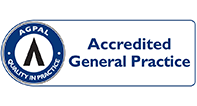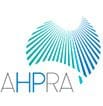STROKE
The information on stroke on this website is not designed to provide medical or professional advice. It is designed to provide information only and if you have any health questions or problems please consult a medical doctor.
A stroke occurs when blood supply to the brain or part of the brain is interrupted partially or completely. The interruption can be temporary or permanent. Blood is carried to the brain from the heart by blood vessels called arteries. This blood from the heart carries oxygen and nutrients or food for the brain cells or tissues. The blood-flow to the brain can be interrupted if the artery gets blocked causing an ischaemic stroke or if the artery ruptures or bursts causing bleeding resulting in a haemorrhagic stroke. This interruption of blood-flow results in an area in front of the interruption starving or dying as it does not receive enough oxygen and or nutrients.
Signs of a stroke
Some strokes are fatal and some cause permanent or temporary disability and as a result signs of a stroke are variable and many. The National Stroke Foundation recommends an easy way to remember the most common signs of a stroke. This easy way is called F.A.S.T. where:
F stands for Face - check the face if the mouth has drooped or if the face is asymmetrical.
A stands for Arms - check if they can lift both arms or not or if they have any arm weakness.
S stands for Speech - check if their speech is slurred or different from their normal or if they are understanding.
T stands for Time - time is very important and if you see any of these signs ring 000 right away.
In short facial weakness, arm weakness and difficulty with speech are the most common symptoms or signs of a stroke but we know they are not the only signs. Some of the signs include one or a combination of the following:
- weakness or numbness or paralysis of the face, arm, leg on either or both sides of the body.
- dizziness, loss of balance or unexplained falls.
- difficulty speaking or understanding.
- loss of vision, sudden blurring or decreased vision in one or both eyes.
- headache usually very severe and sudden or unexplained changes in the pattern of headaches.
- difficulty swallowing.
These signs of a stroke may happen alone or in combination and they can occur for a few seconds or up to 24 hours and then disappear. When symptoms disappear or resolve within 24 hours this kind of stroke is called a Mini-stroke or Transient Ischaemic Attack (TIA). The longer the stroke remains untreated, the greater the chance of damaging the brain and we know that emergency medical treatment soon after symptoms start, improves the chances of survival and successful rehabilitation.
Types of stroke
A stroke can occur in two ways, either the brain artery gets blocked or it ruptures. Blocked artery strokes causes ischaemic strokes and this accounts for 4 out of every 5 strokes, that is, 80% of all strokes. There are various things that can block a brain artery, for example, a blood clot can act as a blocker. It can form anywhere in the body for various reasons but most clots form in the heart. From the heart, the clot then travels through the bloodstream to the brain and once it reaches the brain it will travel through the artery until it gets to a point in the artery where it cannot fit as the artery gets smaller and narrower. The clot gets stuck and stops blood from getting through causing an embolic stroke. Another thing that can block the brain artery is a plaque. This is formed as blood flows through the arteries, it leaves cholesterol plaques that stick in the inner wall of the artery and overtime these plaques get bigger and narrow or block the artery causing a thrombotic stroke.
Ruptured artery strokes causes bleeding resulting in a haemorrhagic stroke. The rupturing of the brain artery can be due to several causes such as long standing high blood pressure or aneurysm. The bleeding can occur inside the brain tissue itself and this is called intracerebral haemorrhage or it can happen on the surface of the brain causing what is called a subarachnoid haemorrhage.
Effects of stroke
The brain is divided into several parts and each part controls a different function in the body and the brain itself, for example the back part of the brain controls vision, the right side of the brain generally controls the left side of the body and vise versa. In addition, different arteries in the brain supply different parts of the brain. As a result, where the brain gets damaged will determine which functions of the brain get affected, that is, the way one is affected depends on where in the brain the stroke has happened and how big the stroke is. There are also other factors that impact on the effects of the stroke and these include your general health to start with, how much brain tissue is permanently damaged.
Stroke risk factors
There are several stroke risk factors and the more risk factors you have the higher your chances of having a stroke. Some stroke risk factors are not modifiable, that is, you cannot change them and these include:
Age - because as you get older your risk increases.
Gender - we know stroke is more common in men.
A family history of stroke.
Medical stroke risk factors - such as mini-stroke, diabetes and atrial fibrillation.
In addition there are lifestyle stroke risk factors that you have the power to control and change and these include:
High blood pressure.
High cholesterol.
Smoking.
Increased weight.
Poor diet and lack of exercise.
Excess alcohol.
Treatment of stroke
Stroke is always a medical emergency condition and if you or someone else experiences the signs of the stroke call 000 immediately no matter how long the signs of a stroke last. Getting rapid treatment for a stroke can be the difference between death, disability and good recovery and life. An ambulance will take you straight to the nearest hospital or nearest hospital with a Stroke Unit and early testing will determine what type of stroke you have had and guide treatment. This early testing includes such things as a Brain Scan, either a CT or an MRI or both and this will happen within 24 hours after a stroke. You will also have blood tests, heart tests including ECGs and echocardiograms and or angiograms as part of the stroke work-up.
Medicines - the type of medicine one gets depends on the type of stroke you have sustained, for example, if you have an ischaemic stroke you may be given medicines to dissolve the clot and medicines to prevent further clotting such as aspirin.
Surgery - this will also depend on the type of stroke you have sustained, for example, one may have surgery to drain blood from your brain if you have a haemorrhagic stroke.
Rehabilitation - after a stroke you will need to adapt to any damage the stroke may have caused and recovery may take weeks to months even longer and each person's rehabilitation program is individualized.
Stroke statistics
In Australia about 60 000 people suffer a stroke each year, that is 6 people every hour, and about 12 000 people die each year from stroke, that is 1 person every hour, with more women than men. About 500 000 Australians at any time are living with disabling effects of a stroke and this number is expected to increase to 709 000 by 2032 and to 1 000 000 by 2050. About 80% of all strokes can be prevented and about 30% of stroke survivors are under the age of 65years.
Prevention of stroke
You can take steps to lower your risk of stroke by making lifestyle changes which may include:
Ceasing smoking at any stage.
Reducing alcohol intake.
Eating less salt and cholesterol.
Increasing physical activity.
Help
You are able to get help if you have had a stroke from various professionals and organizations such as:
1. Doctor
2. Allied health Dietician, speech pathology, physiotherapy, occupational therapy
3. Neurologist
4. Stroke Foundation Tel. 1800 787 653 (https://strokefoundation.org.au) and States organizations.
Summary
- A stroke is a medical emergency.
- If you think that you are having or someone else is having a stroke, dial 000 immediately no matter what.
- The easiest way to remember the signs of a stroke is to remember the test called F.A.S.T.
| Tags:stroke |





